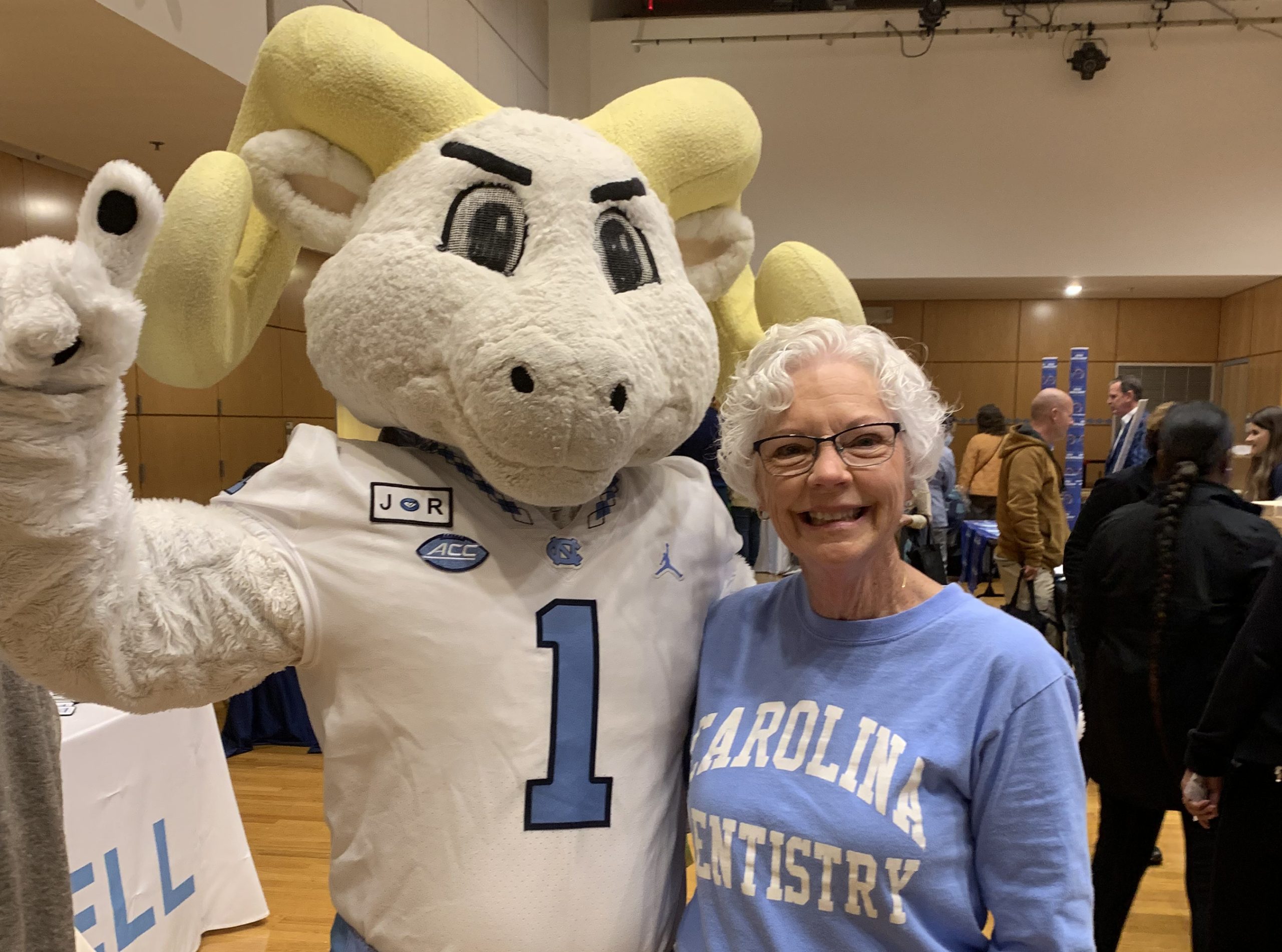Tri-County Community Health Council Significantly Expands Dental Care with 18-Operatory Center
Tri-County Community Health Council Inc., which began 30 years ago as a part-time health program for the Sampson County migrant community, has grown to encompass five community health centers – and has now opened an 18-operatory dental center.
The Tri-County Family Dental Center, a freestanding facility located on the main Tri-County campus, was the center of attention at a Feb. 2 grand opening ceremony. The dental center is located on Maple Grove Church Road in Dunn.
Tri-County leadership and Dean John N. Williams help cut the ribbon on the new Tri-County Family Dental Center.
J. Michael Baker, executive director of Tri-County Community Health Council; Johnson Tilghman, chairman of Tri-County’s Board of Directors; Dr. Horace Harris, Tri-County’s dental director; and Dr. John N. Williams, dean of the University of North Carolina at Chapel Hill School of Dentistry, were among the officials offering remarks at the event.
Tours of the center and refreshments followed.
The new Tri-County Family Dental Center increases Tri-County’s number of dental operatories from seven to 18. At full capacity, the new center is scheduled to have five dentists, two hygienists and related staff.
In addition, each operatory features computer LCD screens, allowing patients and dental-care providers to review X-ray findings and treatment options without having to leave the examination room.
The center will provide dental care to children and adults 8 a.m. to 5 p.m. Monday and Wednesday, 8 a.m. to 8 p.m. Tuesday and Thursdays and 8 a.m. to 1 p.m. Fridays and Saturdays.
The UNC-Chapel Hill School of Dentistry is partnering with Tri-County to send two residents, or postgraduate students, to the new dental center in late summer to provide dental care as a part of a pilot program. UNC-Chapel Hill regularly sends dental students on rotations to Tri-County to help provide care for patients.
“The opening of the new dental facility makes many dreams come true,” Baker said. “In its early years, Tri-County engaged in numerous projects with UNC and other institutes of learning providing service capacity and research to southeastern North Carolina. This renewed partnership loudly states that underserved and rural populations are again the priority of a growing number of leaders across the state. This leadership, such as demonstrated in the collaboration to establish this facility, can and will look beyond political and jurisdictional considerations to succeed in providing health-care access to communities truly in need.”
Williams added: “Tri-County Community Health Council has demonstrated a notable commitment with the expansion of its dental program, and the School of Dentistry is honored to partner in what truly will become a statewide and national model in community dental care,” Williams said. “Tri-County is a statewide leader in providing comprehensive health care – and with tremendous compassion. This new center makes even more tangible Tri-County’s commitment to advancing dental health within our state.”
Dean John N. Williams, right, presents a plaque to J. Michael Baker, Tri-County Community Health Council’s executive director, in appreciation of Tri-County’s valuable role as a health-care provider.
The new center will offer full teleconferencing capability, enabling UNC-Chapel Hill School of Dentistry students to consult in real time with faculty.
The School of Dentistry is one of the partners in Tri-County’s newly established Community and University Partnership to Improve Dental Access. Other members of the partnership are the Golden LEAF Foundation and the Kate B. Reynolds Charitable Trust.
Tri-County Community Health Council provided culturally appropriate and bilingual medical, dental and behavioral health services to more than 22,000 patients in 2006 and is growing at more than 10 percent per year since 2000. The organization serves the populations of Johnston, Sampson, Harnett, Bladen and Pender counties – an area covering about 3,700 square miles of rural southeastern North Carolina


